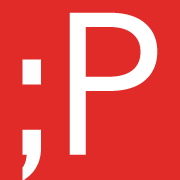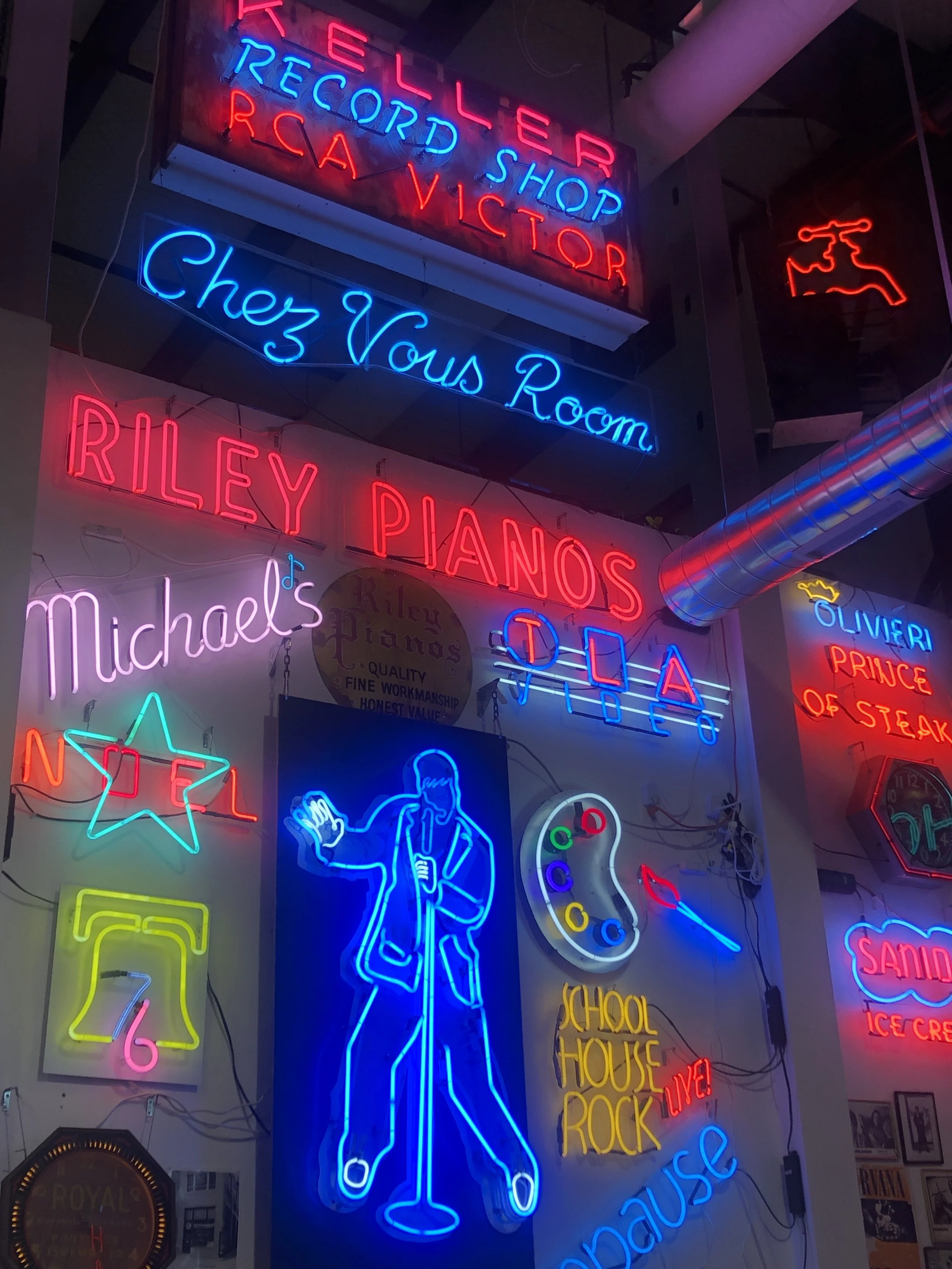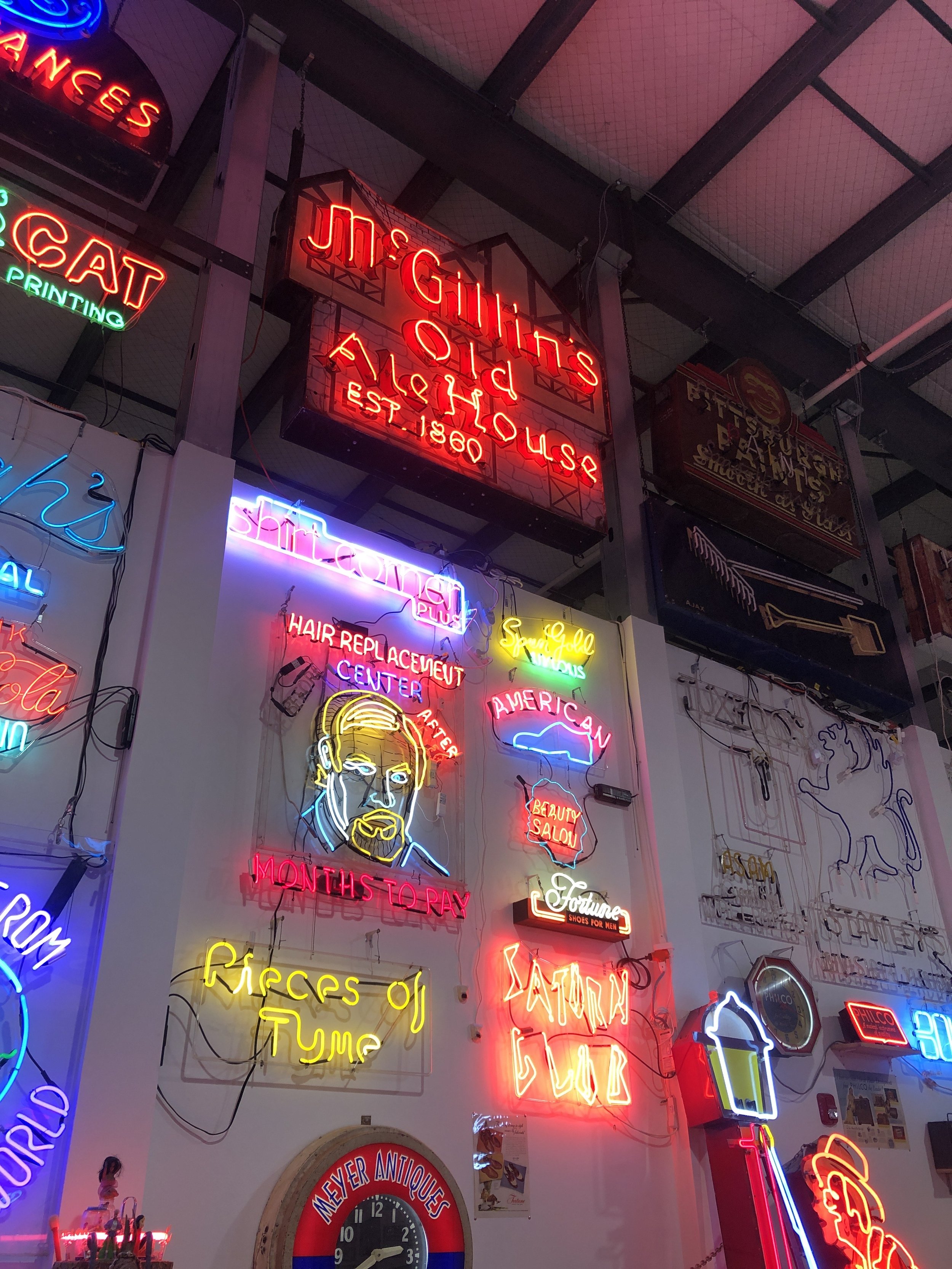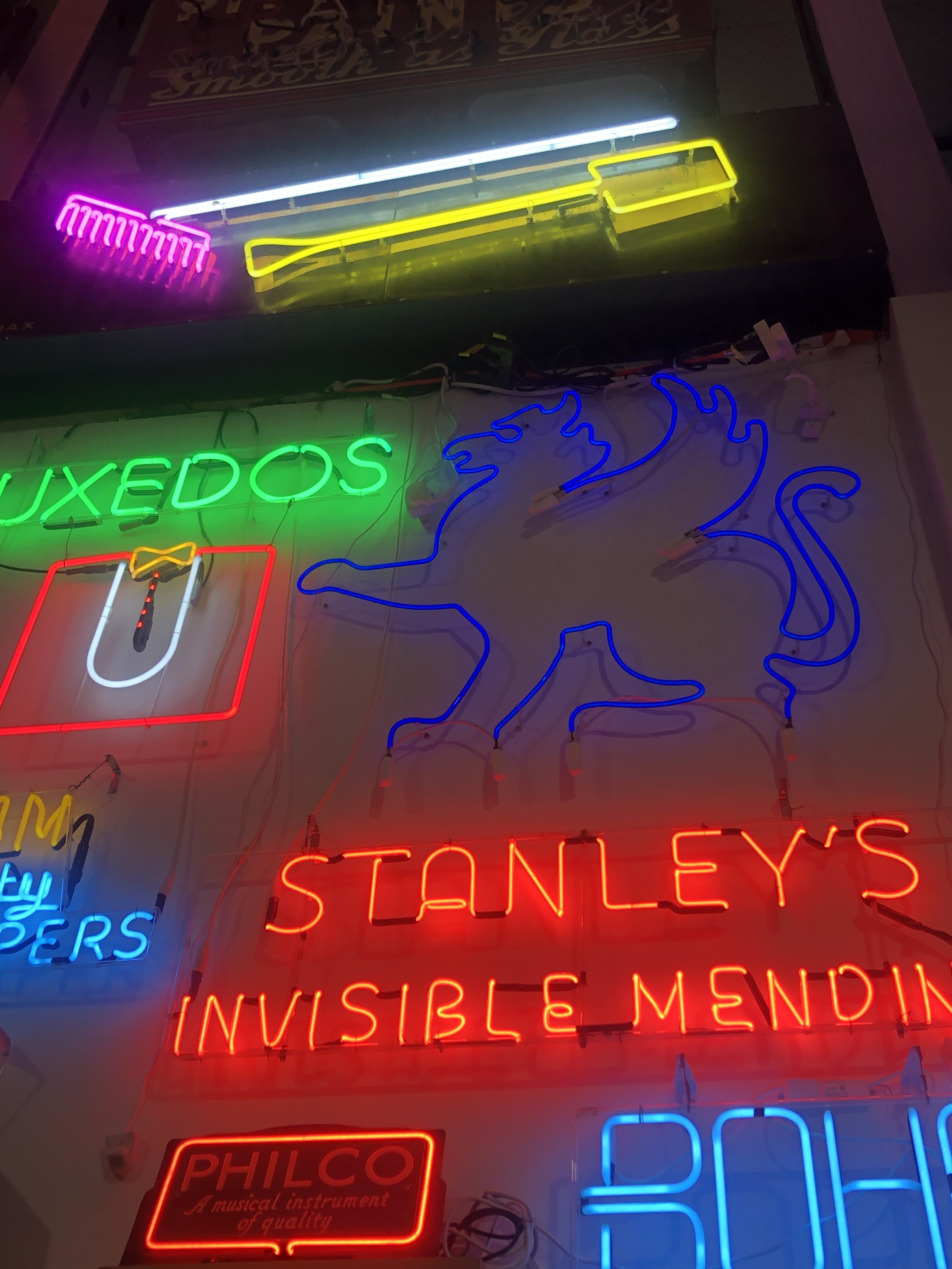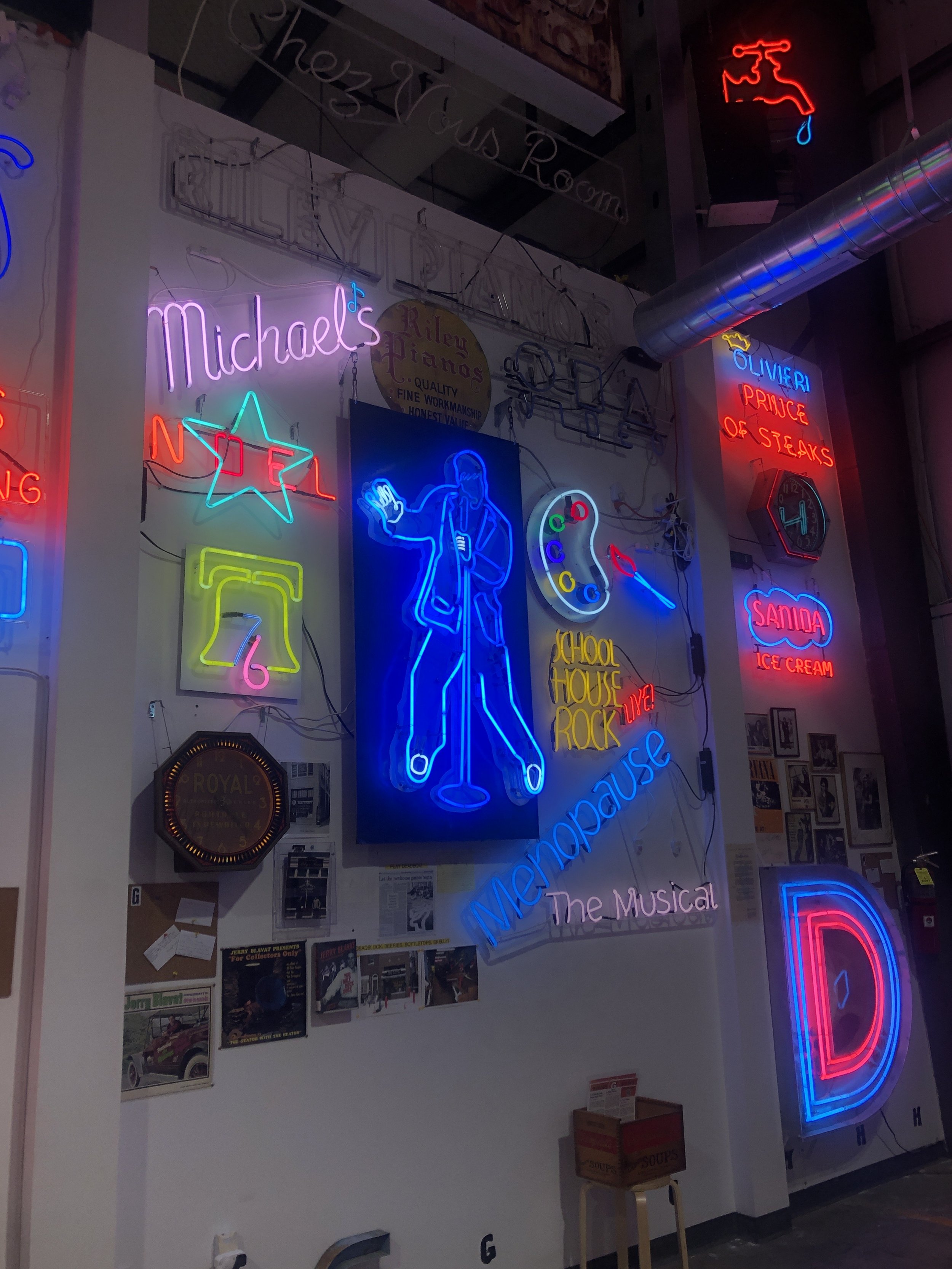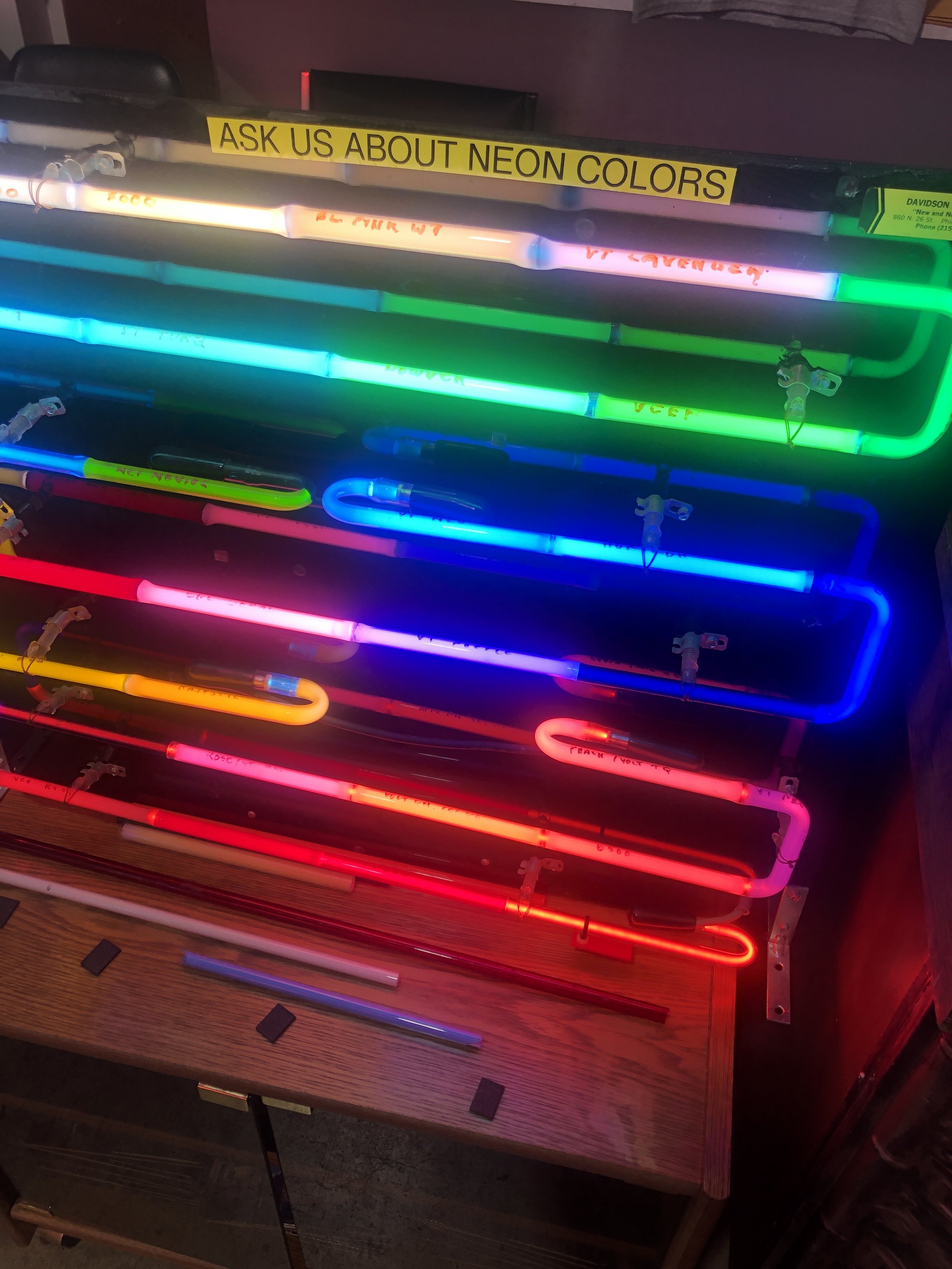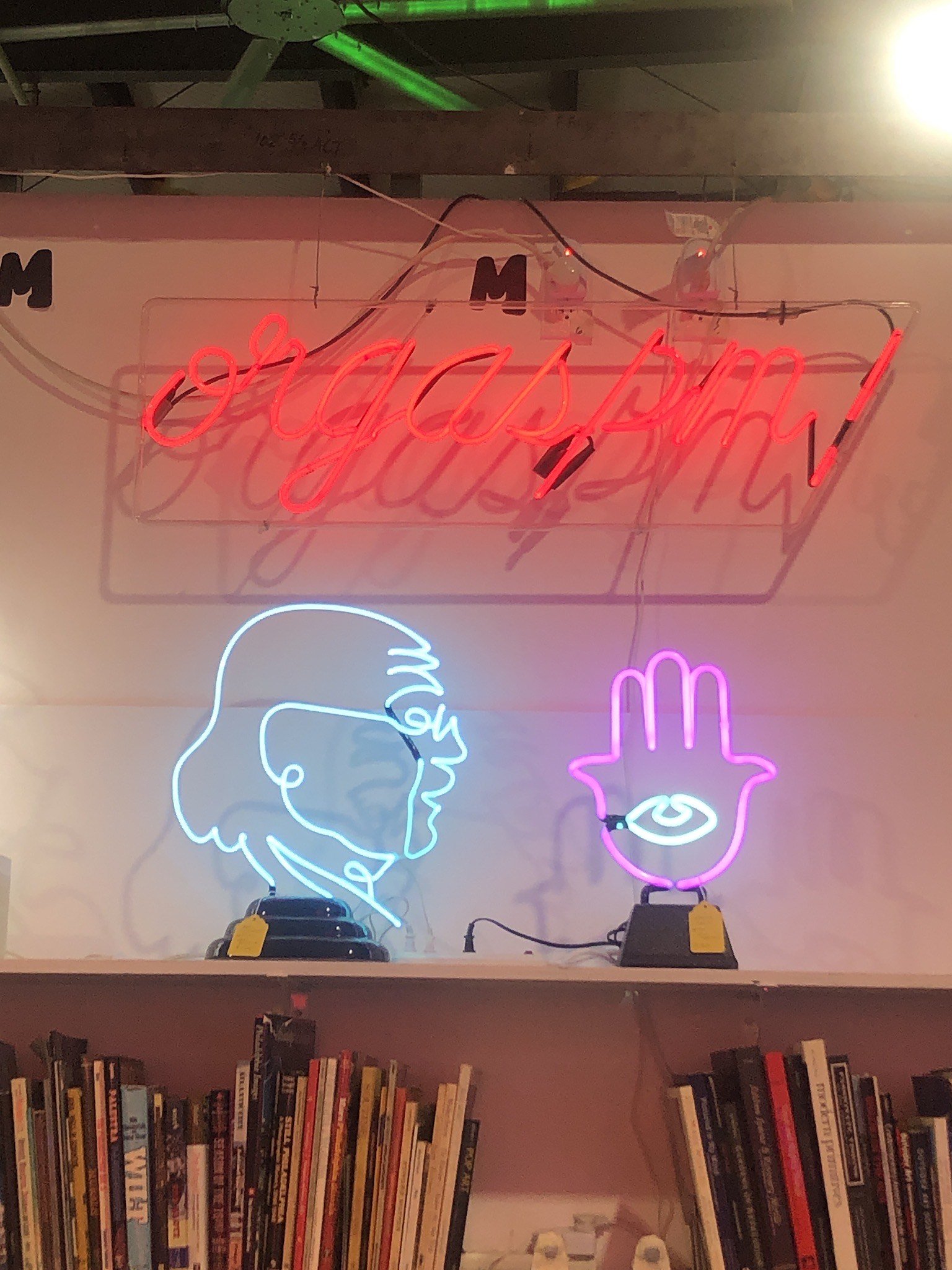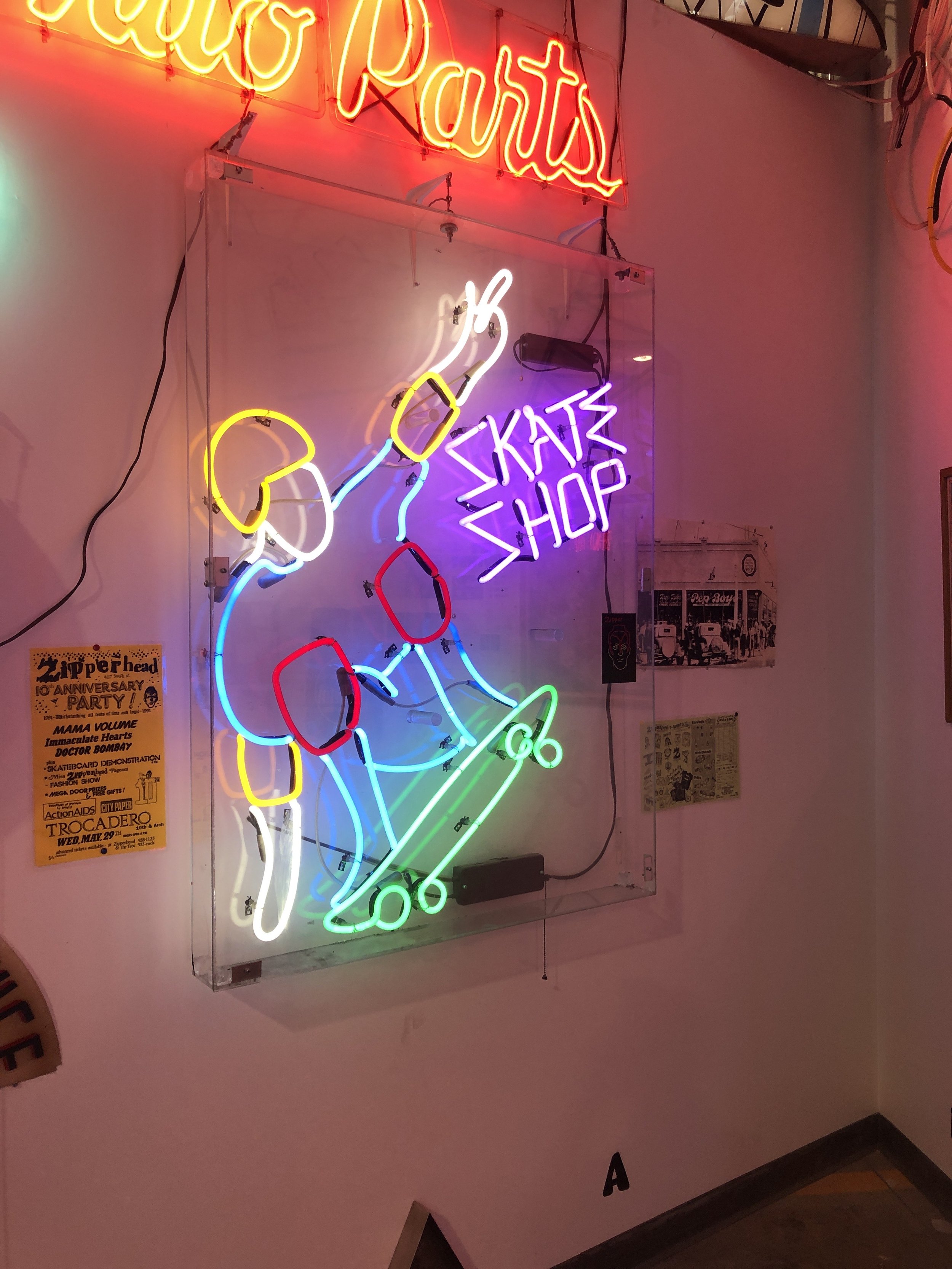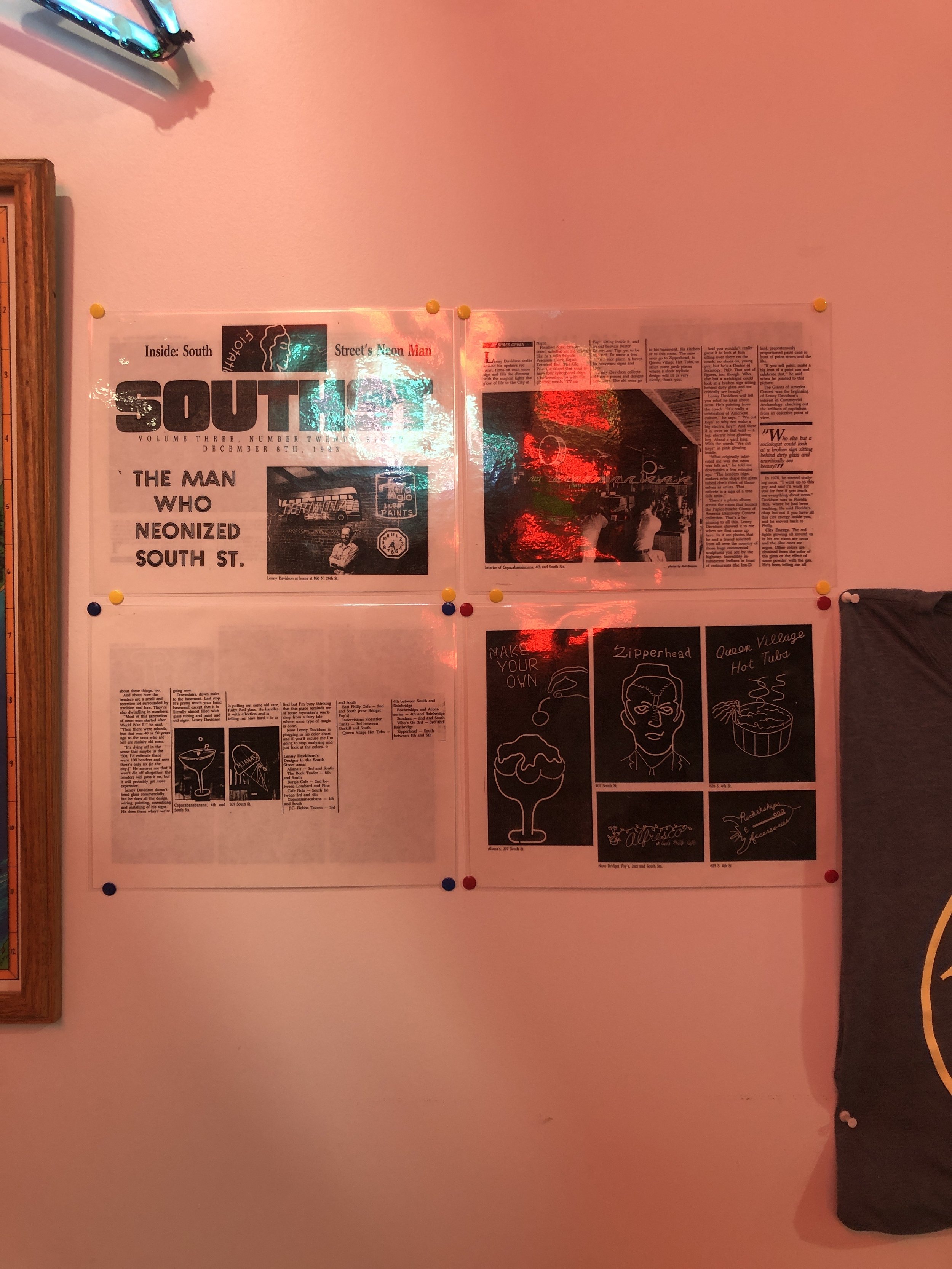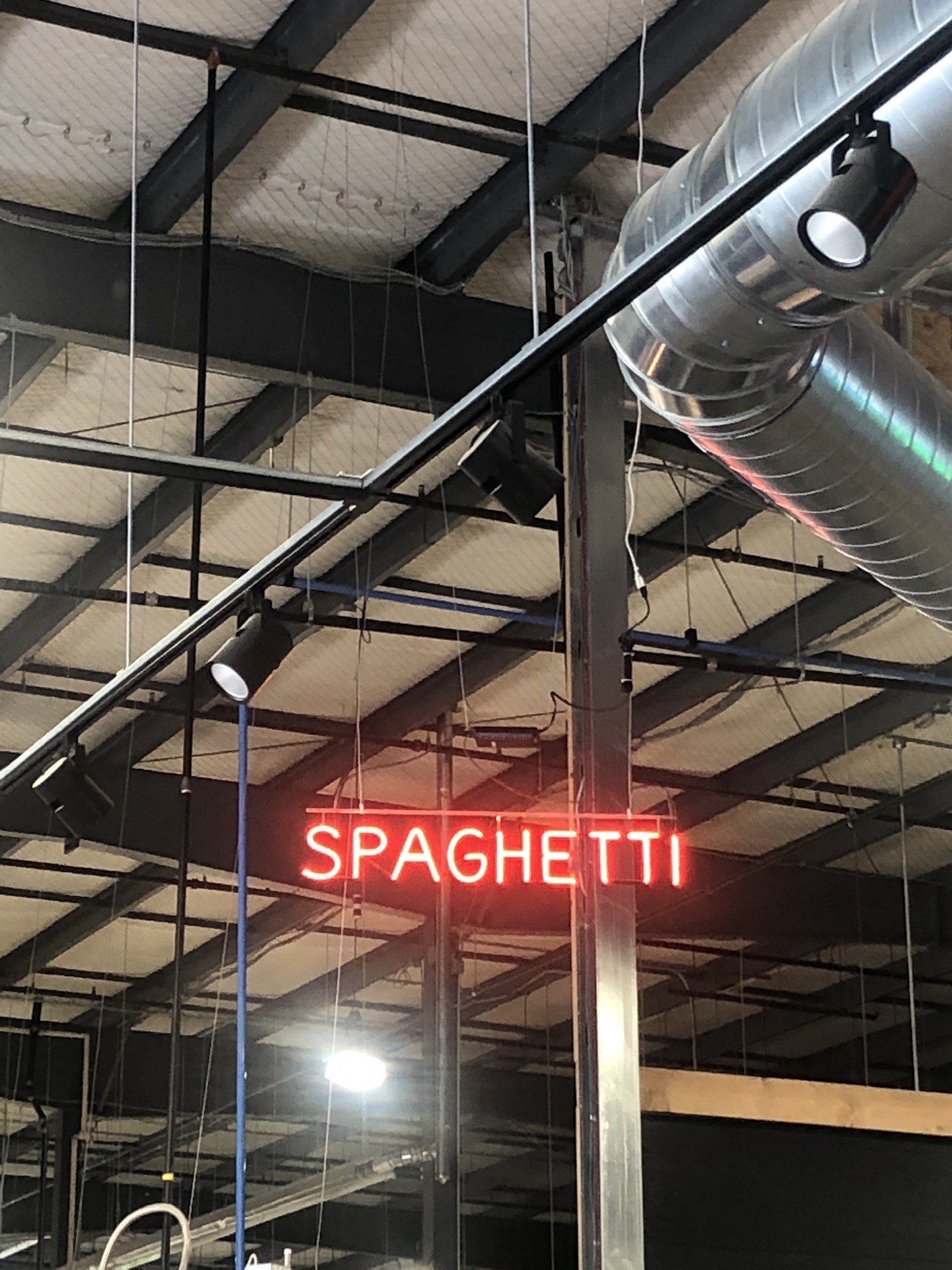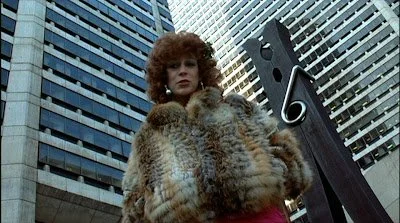Feeling Gassy: The Neon Museum of Philadelphia
BY KIKI VOLKERT | Neon signs serve as beacons guiding us towards our local businesses and attractions, but they are not miracles. No one asked, but here's they work: A long glass cylinder is heated until it's pliable enough to be bent into its desired shape and then filled with either neon or argon, sealed, and attached to an electrode, which releases an electrical current that causes the gas to emit a “glow discharge.”
So if you're the type of freak that is into chemistry and electricity, you should make your way to Tthe Neon Museum of Philadelphia. And if you're the type of freak that is into design, advertising, campiness, the history of American commerce and globalization, typefaces, skilled craftsmanship, ephemera, nightlife, weird collections, Philadelphia 20th century history, you should also go to the Neon Museum. Really, if you're any type of freak you should go to the Neon Museum because it's both beautiful and weird and anything that lies at that nexus should be fully supported.
Being inside of it feels like being in love, if your concept of love feels like awe at devotion to one specific thing. Founder Len Davidson has been collecting, repairing, and creating neon signs for decades, and only recently found permanent space in the NextFab building in Kensington to turn all of the neon signs he's acquired into a museum. Talking to him feels like talking to a friendly neighbor that has a Ph.D but is still down to be on a Quizzo team with you. He's one of only a handful of local neon sign makers left. His handiwork is all over the city. He's done the Boot and Saddle sign on Broad Street and many of the signs in Reading Terminal including the sign for Downtown Cheese (the best neon sign in the city, in my opinion) and the fruits in the window at Iovine Brothers.
The reason for the scarcity of neon sign makers is the decrease in demand for the signs themselves — that’s due to the emergence of LED signs in the 90s, which are much cheaper to make than neon signs because they can be made with machines and require no human labor. Of all the casualties of globalization, the craft of neon sign making seems to be one of the most overlooked, and tragic. But the vibe at the Neon Museum is celebratory, not mournful. Len calls it a museum of "culture before the internet," not in a 'things were better then” way but in a “refresh yourself with exposure to an almost forgotten type of beauty” way. He recalls a pre-Amazon.com era characterized by an economy of small neighborhood businesses that depended on the type of glitz and spectacle that can be created only by neon signs lighting up the streets to draw in human eyes and subsequently bodies that spend money.
Every piece in the collection seems to tell a story about some segment of industry or culture. The history of Philadelphia's garment industry is reflected in a sign that TUXEDOS, which once hung in a formal wear rental shop in Kensington in the 70s. The large neon "D" that once hung behind the stage at Dobb's on South Street is an artifact of the city's music scene; on another wall is a sign that says SKATE SHOP that once hung in Zipperhead. Signs from Horn & Hardart, Pat's King of Steaks and Levis hot dogs outline a local history of eating lunch. And so on. The Neon Museum also has space for neon-adjacent exhibits—check their website to see what’s current.
Neon Museum of Philadelphia (at NextFab), 1800 North American St, Unit E (southwest corner of North American and Berks Streets). Open Friday: 4pm to 8pm; Saturday & Sunday: 12pm to 5pm. Reservations preferred but walk-ins welcomed.
